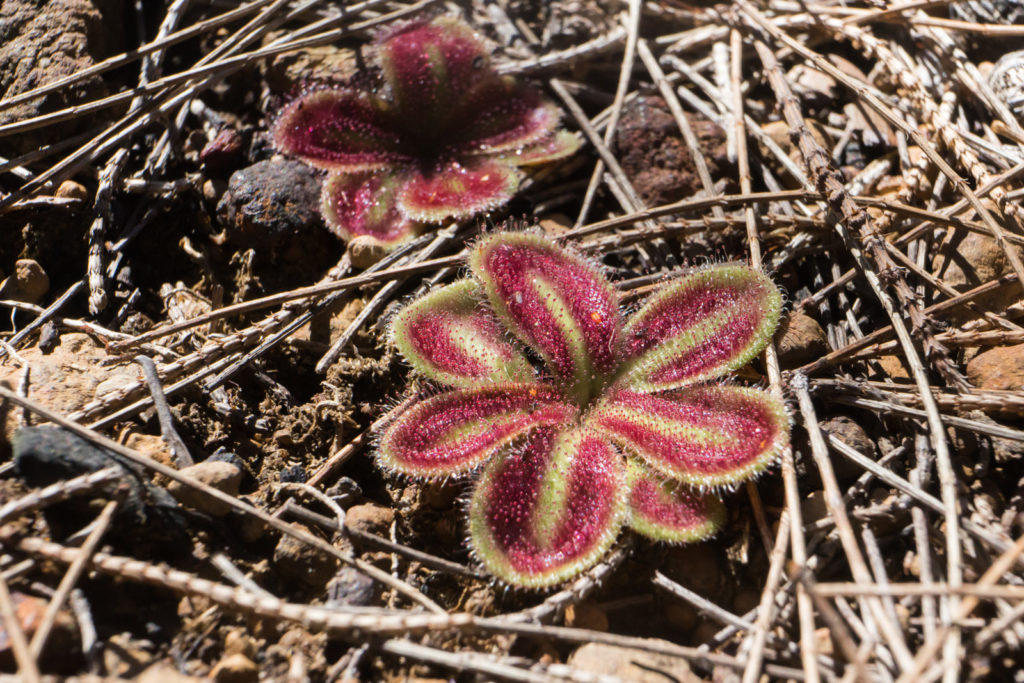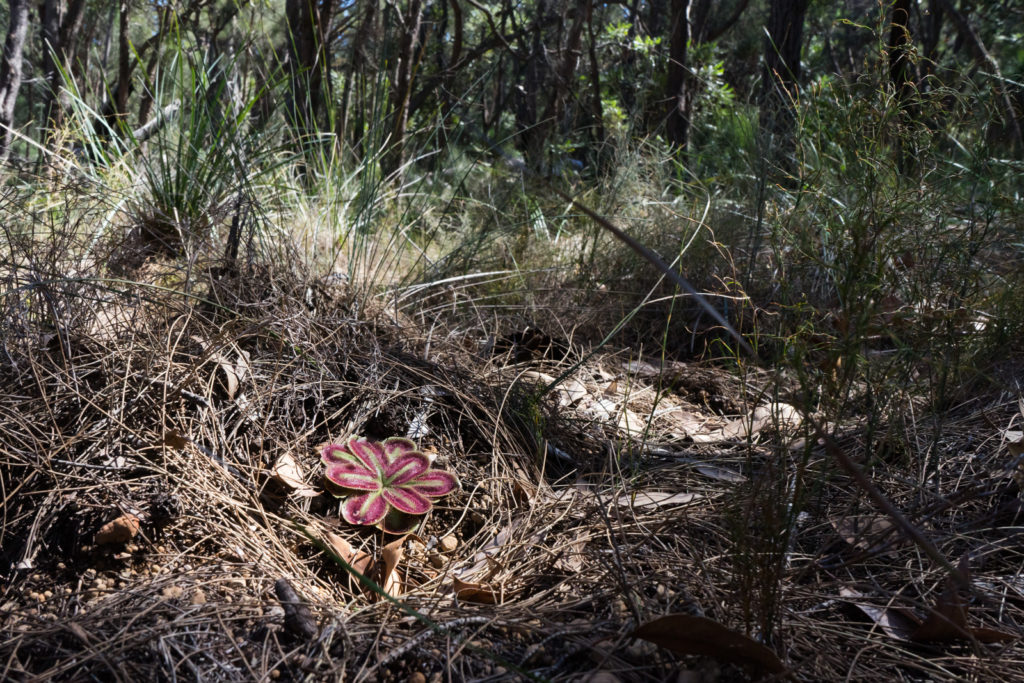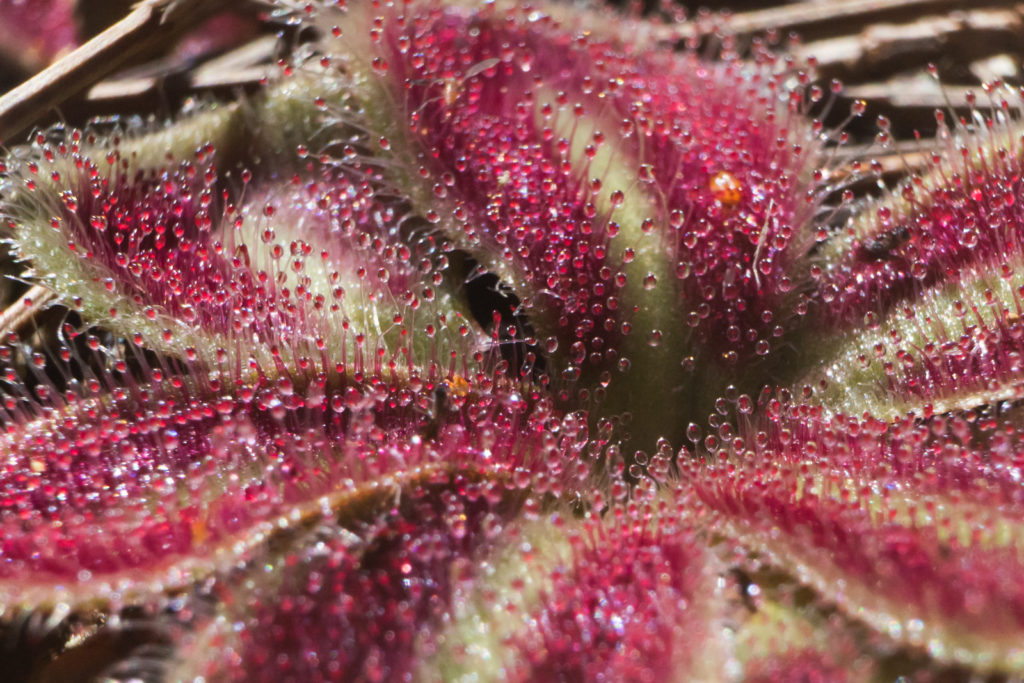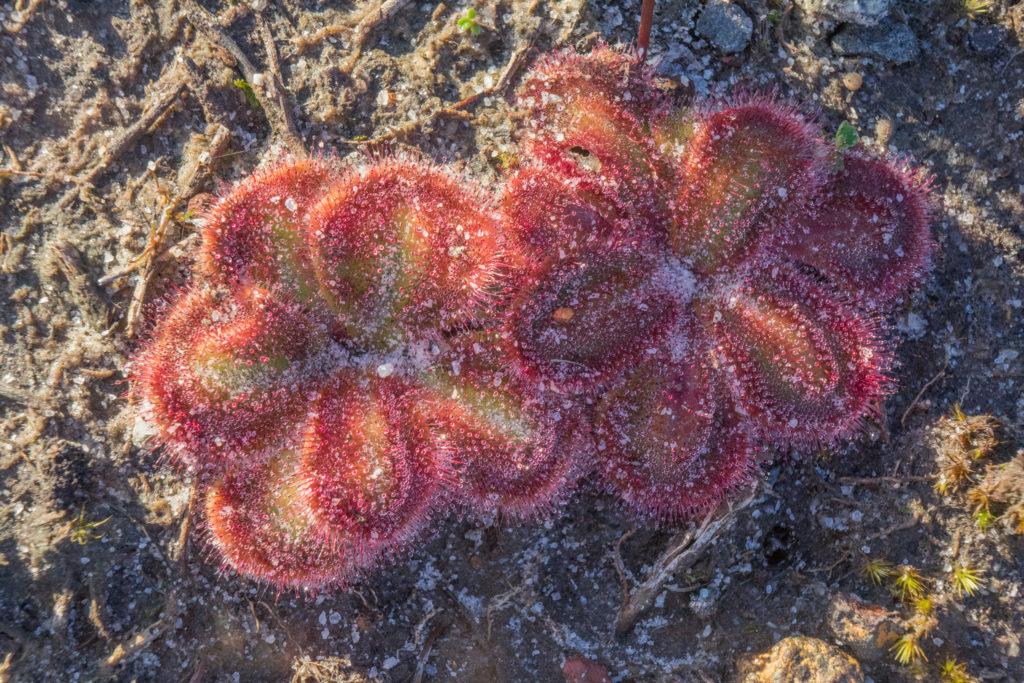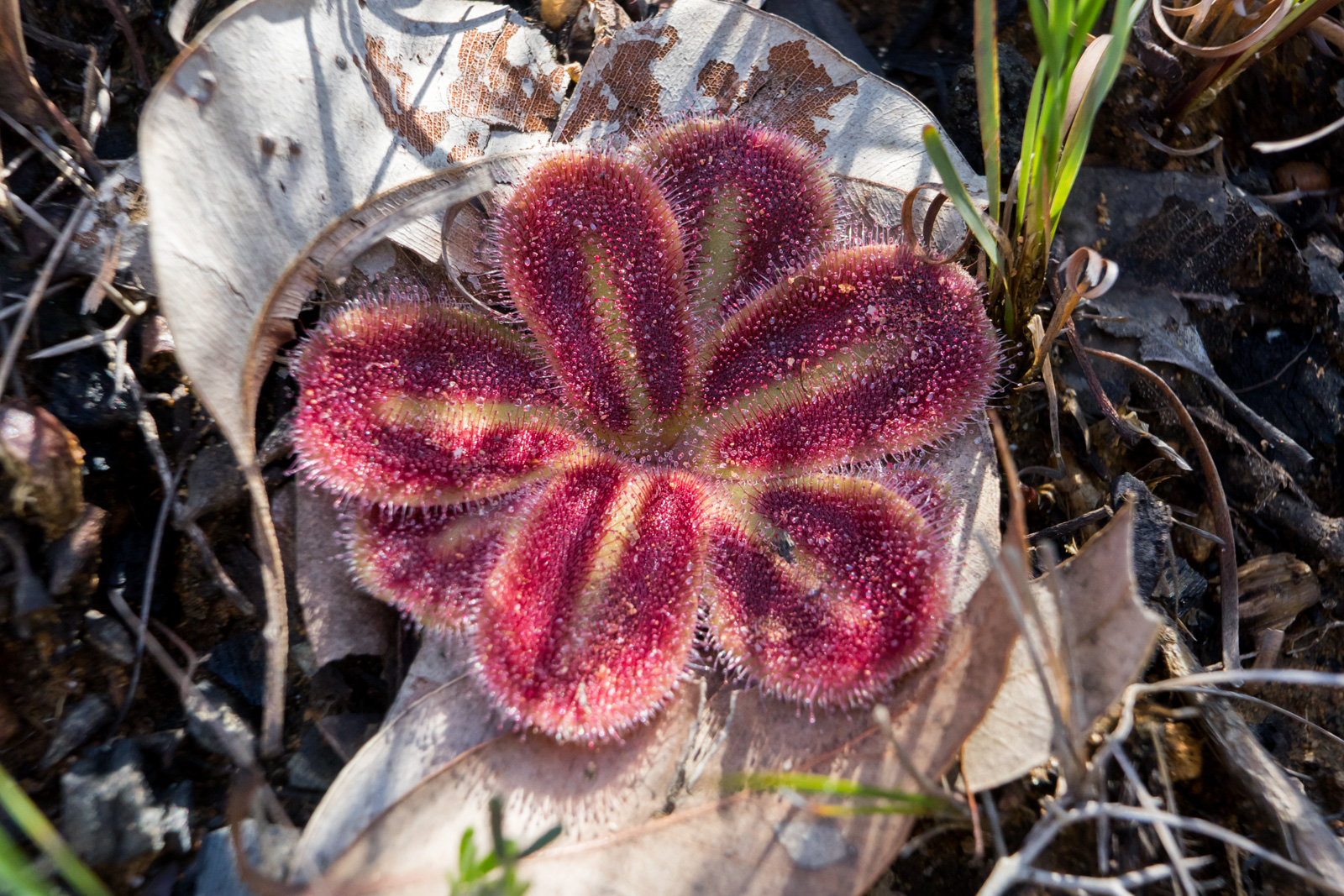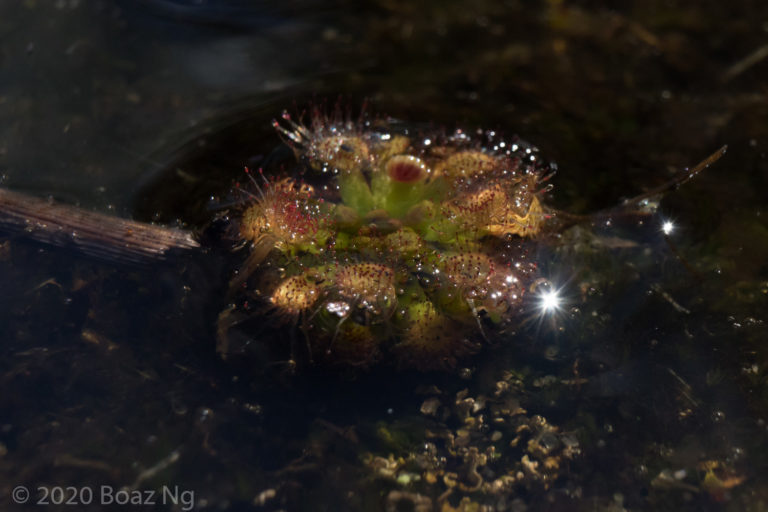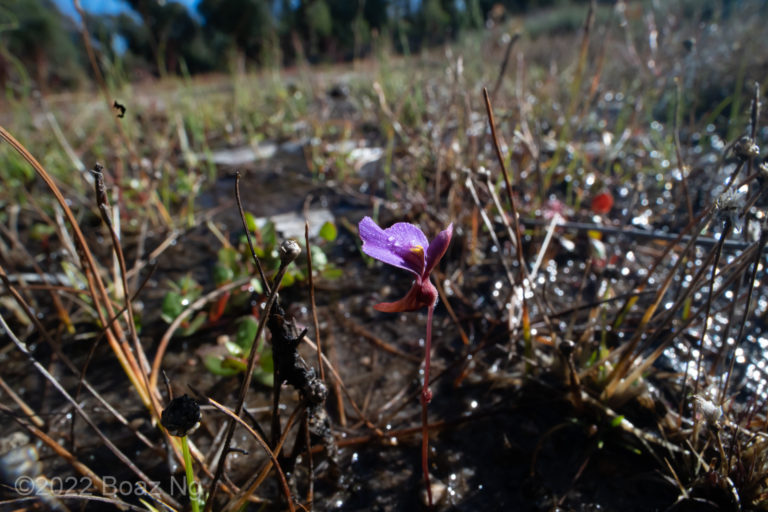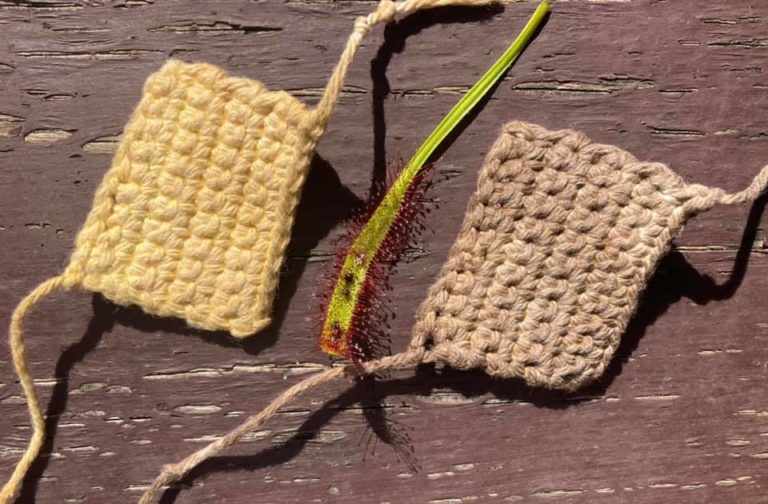Drosera squamosa is arguably the most beautiful rosetted tuberous sundew. It is a species in the Drosera erythrorhiza complex that is distinguished by a striking margin of red around its leaves. The species usually has 7-8 leaves which are obovate in shape reach around 6-10 cm in diameter. The red coloration intensifies throughout the season. The species normally flowers only after summer fires and an inflorescence of white flowers emerges prior to vegetative growth.
The typical Drosera squamosa grows in Jarrah Forest in the Darling Scarp east of Perth. Here, the substrate is usually composed of laterite rubble. The plants grow in dappled shade and attain the bright coloration regardless of light intensity. It typically occurs singly, and doesn’t form the dense clonal colonies of D. erythrorhiza.
There is wide variation within the Drosera erythrorhiza complex, with several similar plants grouped together to from the current concept of D. squamosa. These plants typically have a red lined border and moderately large and elongated leaves. A similar taxon occurs in sandy peat aside swamps near Bunbury and along the south coast. This taxon has a slightly more rounded leaf shape but the red margin is less pronounced.
The Drosera erythrorhiza complex consists of four closely related species and a number of intermediate forms. Drosera squamosa is most closely related to Drosera collina, both sharing an elongated leaf shape and sharing a similar habitat. Indeed, the separation between the two species has been debated. D. squamosa is distinguished from D. collina by its slightly smaller size, fewer leaves and red margin.
